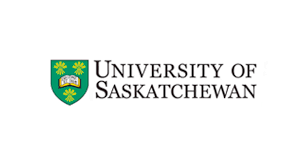University of Saskatchewan researchers to secure remote access to huge array of Statistics Canada data
“This is a significant investment in terms of social sciences, and it will provide faculty and graduate students access to survey data on large samples of 30,000 or 60,000 people they wouldn’t otherwise be able to actually generate,” said Dr. Carl D’Arcy (PhD), professor of psychiatry in USask’s College of Medicine, and School of Public Health (epidemiology).
“I want to stress that it’s high-quality, anonymized data you can access and use it whatever reasonable way you see fit. It provides huge opportunities for doing research of significance to Canada or even regionally,” said D’Arcy, academic director for the Saskatchewan Research Data Centre (SKY-RDC) platform. Study results are publishable in high quality journals.
SKY-RDC is part of the nationwide Canadian Research Data Centre Network (CRDCN) that received the funding announced in November by the Social Sciences and Humanities Research Council (SSHRC) and the Canadian Institutes of Health Research (CIHR). This investment follows another $17.4 million in ongoing funding for CRDCN announced this summer by the Canada Foundation for Innovation (CFI).
D’Arcy said researchers can divide the national data sets provided by Statistics Canada and administrative data available from federal and provincial agencies any way they want to, and look at a single province, region or the entire country.
“What’s readily available is really significant,” D’Arcy said, noting that about 40 faculty and student clusters are making use of the data, with graduate students often using the platform to access information for use in their theses. Researchers need an approved project to access data.
With available data covering long periods, researchers can track trends in everything from population structure to disease prevalence, adult literacy, immigration integration, and child poverty. Data from the Canadian Social Survey provides data on everything from well-being, unpaid work, and family time to quality of life and cost of living, to issues such as discrimination. The wide array of other data covers geographical data, agriculture-related data, economic data of all types, and health-related data.
“I don’t think USask faculty and students make as much use of it as they should, especially because for junior faculty members it’s high-quality data you can use that really requires no extra funding,” he said.
“When you wish to develop an area of expertise and do not have a large amount of grant funding available to you, these datasets give you a foundation from which you can certainly develop a publication track record. All it takes is your time and effort.”
SKY-RDC currently has about 10 workstations at its location in the Murray Library, where USask users and authorized users must go to access the data through the CRDCN network with support from onsite Statistics Canada analyst Dr. Ruben Mercado (PhD).
The planned move in the next year or two by Statistics Canada and 33 universities across Canada to establish the new virtual Research Data Centre (vRDC) platform will, for the first time, enable bonafide social science and health researchers to remotely access most of the confidential datasets through their laptops or tabletop computers, as well as enhance their access at campus-based RDCs.

